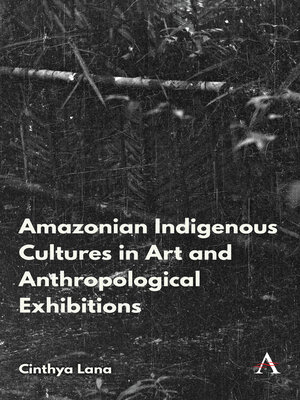Amazonian Indigenous Cultures in Art and Anthropological Exhibitions
ebook ∣ Anthem Brazilian Studies
By Cinthya Lana

Sign up to save your library
With an OverDrive account, you can save your favorite libraries for at-a-glance information about availability. Find out more about OverDrive accounts.
Find this title in Libby, the library reading app by OverDrive.



Search for a digital library with this title
Title found at these libraries:
| Library Name | Distance |
|---|---|
| Loading... |
The book discusses the representation of Amazonian indigenous cultures in art and anthropological exhibitions through the analysis of a series of case studies of temporary exhibitions taking place in museums and biennials in Brazil, Europe and the United States spanning a period of 25 years from the mid-1980s. The book puts forward the concept of 'minor curating' as a strategy to amplify access to collections of historical relevance for indigenous peoples and to enable them to develop projects that are politically, historically and culturally meaningful for their own societies through curatorial authorship.
|The book discusses the representation of Amazonian indigenous cultures in temporary exhibitions taking place between the 1980s and 2010 through the analysis of selected case studies of these exhibitions held in major institutions in Europe, South America and the United States, including the British Museum, Musée du Quai Branly, Centre George Pompidou, Museum of Modern Art of New York, São Paulo Biennial and São Paulo Art Museum. Drawing on extensive archival research, the book is richly illustrated and presents a range of exhibition documentation never published before.
The book takes as a starting point the theoretical discussions that emerged in the 1980s stimulating the development of notions of 'decolonising' or 'indigenising' the museum as well as of practices of collaboration between museums and indigenous communities. Forty years on from the outset of these debates, the book proposes a critical inquiry on how these discussions inflected on exhibition practices in the following decades, focusing in particular on how 'major' institutions (ethnographic museums, art museums and art biennials) have responded to these debates.
The results of the research suggest that practice has fallen behind theory and that most 'major' institutions or museums within Europe and the United States are still only marginally engaging with Amazonian indigenous peoples in the organisation of exhibitions. The book advances the concept of 'minor curating' as a strategy to potentiate access of indigenous peoples to historical collections held by major institutions and to facilitate the development of cultural projects with these collections and in ways that are culturally, historically and politically effective. The book has an interdisciplinary reach contributing to the fields of visual anthropology, curatorial studies, museum studies and exhibition history and covering a geographical area that has been overlooked within these fields.







